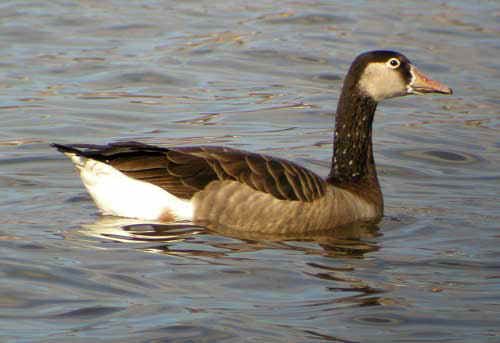 Confusing Domestic Geese (and hybrids)
Confusing Domestic Geese (and hybrids) Confusing Domestic Geese (and hybrids)
Confusing Domestic Geese (and hybrids)
Pictures taken with an Olympus D-450 or D-40 digital camera through a Swarovski HD80 or Swarovski AT80 spotting scope.
All photos © Kevin and Jay McGowan, unless otherwise noted.
Whenever I hear about a report of a Greater White-fronted Goose in upstate New York, I always want to hear a few details to assure that the observer (especially a novice observer) did not confuse a domestic goose. If you just look in most field guides and try to match plumage patterns, the only option for the following geese are White-fronted Goose. But they're not!
Domestic Greylag Goose (Anser anser)
The Greylag Goose, a native of northern and central Eurasia, has been domesticated and raised for meat for over 1,000 years. It can be white, completely gray (like the wild form), or somewhere in-between. Dozens of domestic breeds exist, with lots of variation in size and coloring. (In some the coloring is sex-linked, with females having gray patches and the males always white!)
These domestic greylag geese were present in the marina at Myers Pt., Lansing, NY on 24 Feb 2001, the same day a real Greater White-fronted Goose was off the south shore (go here to see that bird). Notice the general similarity in pattern to White-front, but a completely different shape and size. Domestic geese are bred to be big and provide a lot of meat, hence they are very bulky.
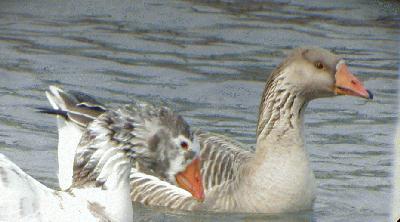
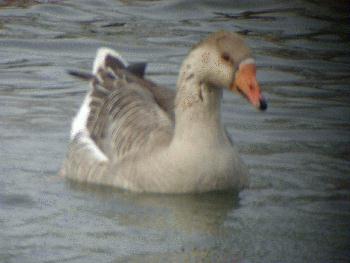
Their necks are thick, their bodies are very bulky with extreme bellies on land and a big butt on the water. Their bills tend to be thickened at the base behind the nostrils. Compare this face with a real Greater White-fronted Goose and you'll see a quite different profile.
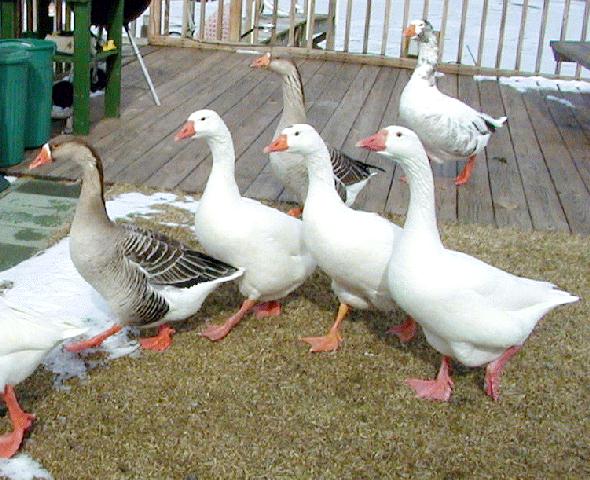
Domestic geese can be any color between completely gray (wild type) to completely white, but they are always big and blocky with a different bill shape.
Domestic Swan Goose (Anser cygnoides)
Another species of goose that has been domesticated is the Swan Goose, native to eastern Eurasia and sometimes called a Chinese goose. A domestic swan goose usually has a large knob at the base of the bill (the wild form lacks this). It also can show a white patch behind the bill. It varies from wild type coloring (mostly gray with a dark line down the back of the otherwise white neck) to pure white.
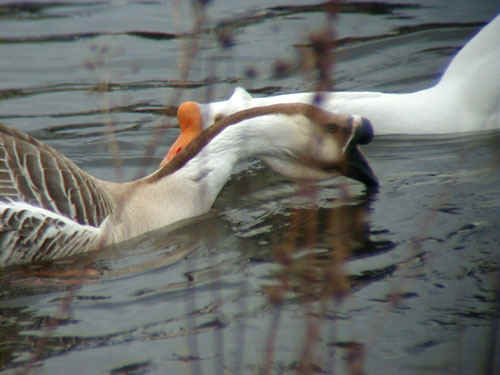
The following domestic goose was present in the Canada Goose flock off Stewart Park, Ithaca on 24 November 2000. Notice the white "front" behind the bill, but the bill is very swollen at the base.
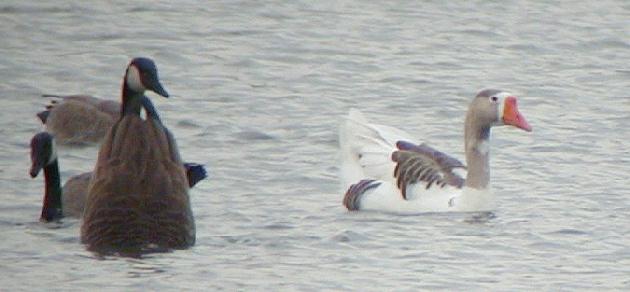
Occasionally you will find a domestic goose with a thin, more natural bill size, like this one we saw in the large Canada flock off of Union Springs, NY on 24 February 2001. Its head and bill could be easily confused with those of a Snow Goose, but again this is a large, blocky goose with a thick neck.
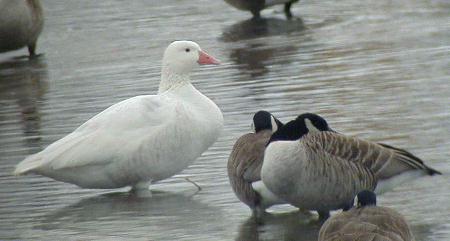
Just to keep things confusing, geese hybridize too.
This goose was also in the flock off Union Springs, NY on 24 February 2001. It obviously is of domestic ancestry (orange legs, thick neck), but looks like a cross with a Canada Goose (dark, Canada-shaped bill, back coloring).
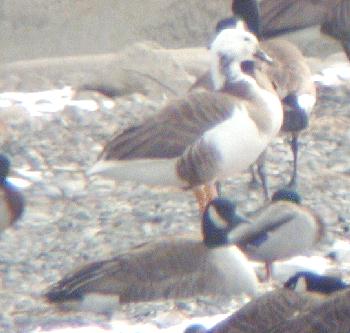
This goose was present with the flock off Stewart Park, Ithaca, NY on 24 November 2000, and was associating with the domestic goose pictured above (Mom? sibling?). Its Canada Goose heritage is very apparent from the dark neck, facial pattern, and overall body pattern, but the white behind the bill and the long red bill itself point to a domestic goose parent.
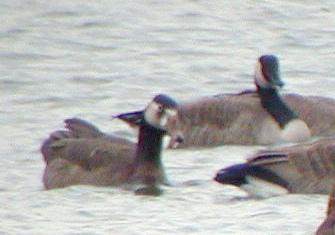
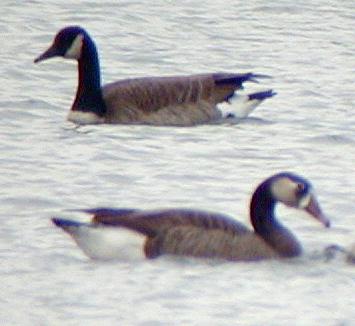
The following apparent hybrid geese were hatched and raised at Stewart Park, Ithaca, NY in the summer of 2002. The parents were clearly domestic geese, but it kind of looks like Mom was fooling around with a Canada Goose. These geese closely resemble the one seen in 2000 (above). This form appears to be rather common, at least in Upstate New York over the last few years. It closely resembles the "Greater White-fronted X Canada Goose hybrid" pictured in the Sibley Guide to Birds, but is probably far more frequently encountered than that presumably rare hybrid.
Note that even within the family the offspring vary quite a bit. Three of the four had pink bills, but the fourth had a black one. The amount of white behind the bill varied, as did the color of the breast and the extent of the dark neck.
The family out for a stroll, 20 October 2002.

Here is one of the young, still slightly downy on 17 August 2002.
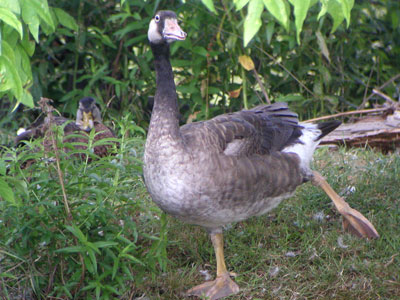
22 October 2002.
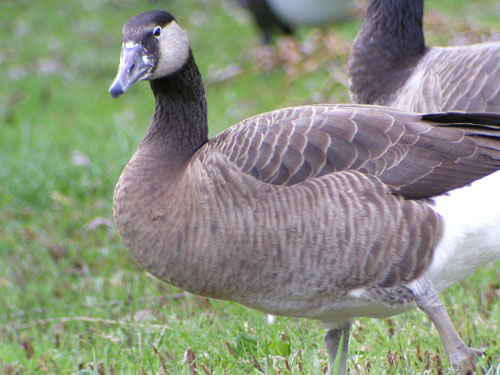
15 May 2003
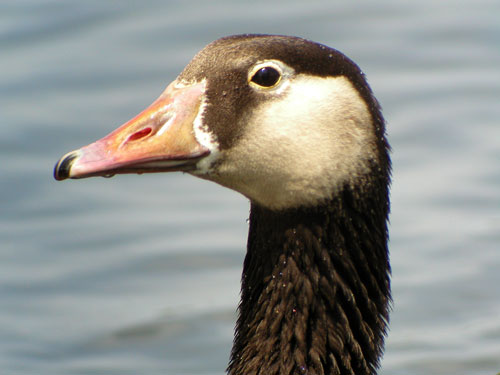
These pictures were taken 30 November 2003.

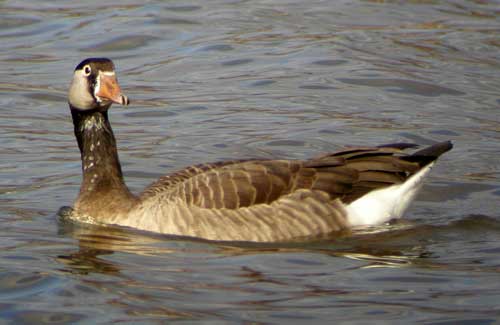
The hybrid is still hanging out with its parents (the domestic goose; I don't know about the Canada).
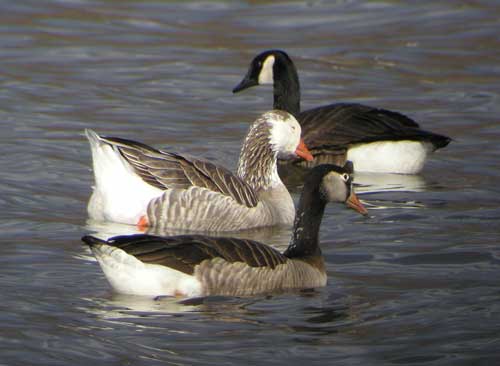
Compare those above two examples with these photos provided by Matt Victoria of a goose he photographed at Oswego, NY in September 2003. (Go to Matt's home page for more of his photos.)
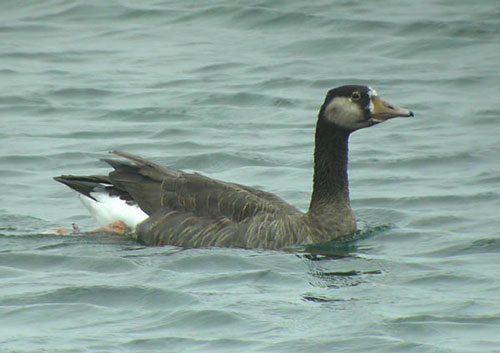
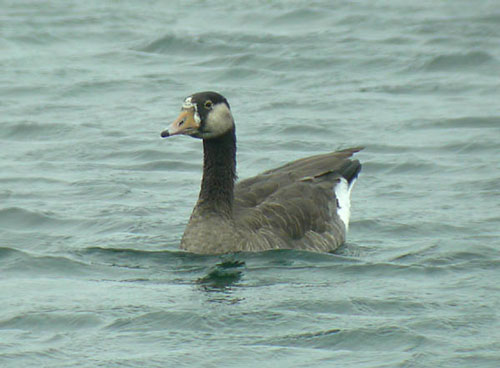
Here is another, rather different-looking presumed Canada X domestic goose hybrid, seen at Stewart Park, Ithaca, on 5 January 2002. The photos are lousy, but a bright pink bill can be seen (indicating domestic goose), along with a faint outline of the white face patch (suggesting Canada Goose?).
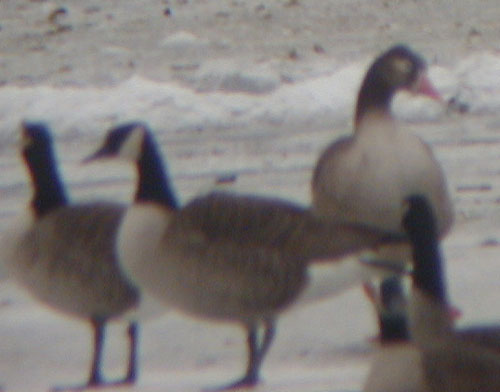
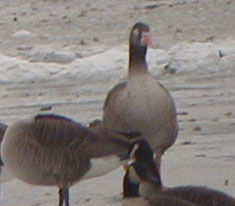
Return to the Bad Photos page.
Return to Kevin McGowan's home page.
Go to the Crow Page.